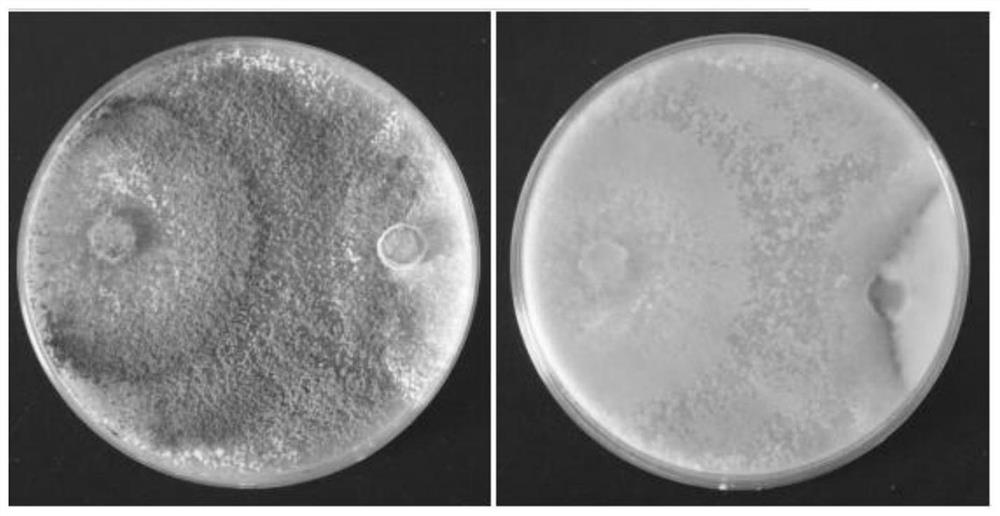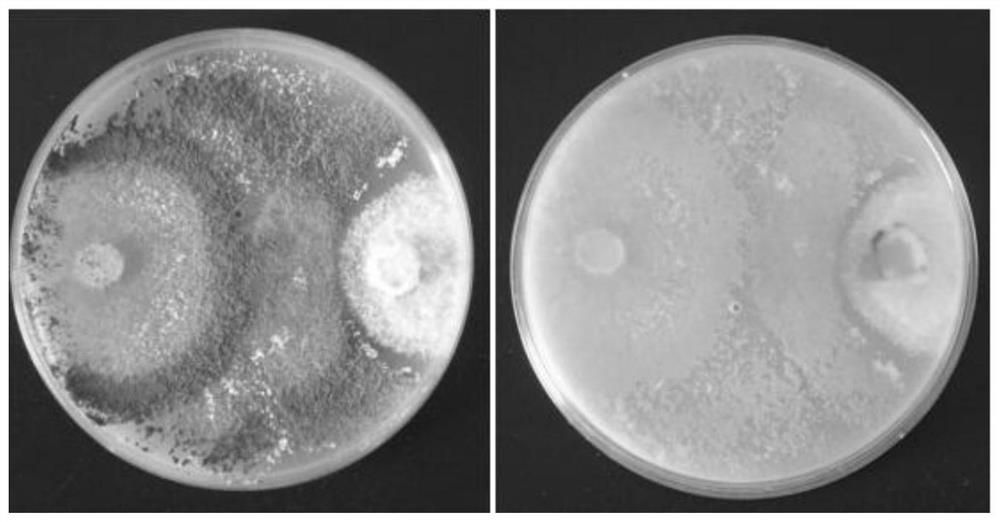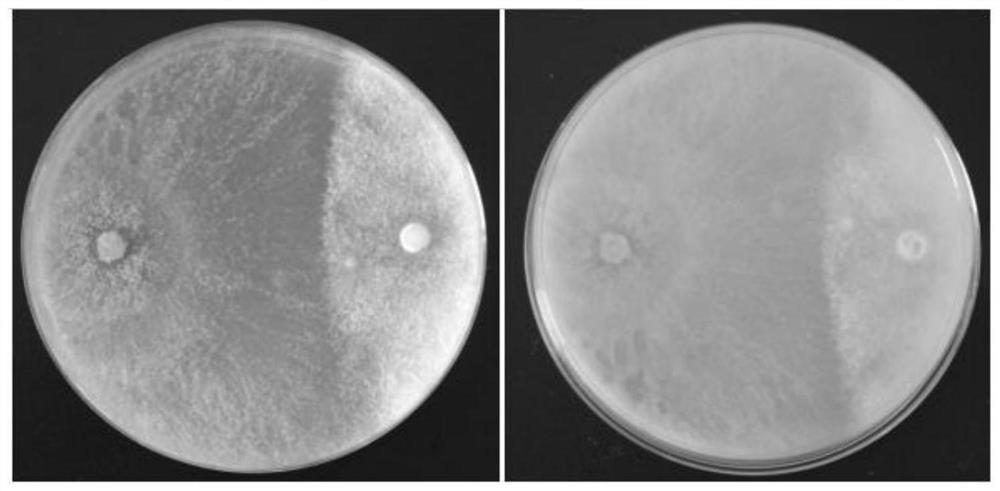Application of Trichoderma in Resisting Soybean Quarantine Diseases
A technology of Trichoderma and soybean, applied in application, chemicals for biological control, fungi, etc., can solve problems such as cumulative poisoning, environmental pollution, pesticide residues, etc.
- Summary
- Abstract
- Description
- Claims
- Application Information
AI Technical Summary
Problems solved by technology
Method used
Image
Examples
Embodiment 1
[0034] Put Trichoderma harzianum and southern stem canker of soybean on the PDA medium, culture in the incubator at 25°C for 5 days, punch holes with a puncher, punch the bacteria into 0.5cm in diameter, and pick one piece respectively Bacterial blocks were placed in the same PDA petri dish, placed in a straight line opposite to each other, with an interval of about 6 cm. Finally, the petri dish was placed in a 25°C incubator for cultivation, and the growth status of the colony was observed every 24 hours.
[0035] The result is as figure 1 As shown, after 3 days, the contact between Trichoderma harzianum and southern stem canker soya bean can be seen. In the following observations, it was found that the two strains were inhibited after meeting, and the growth rate slowed down. After 5 days, the contact part had obvious The atrophy traces, the contact edge has a clear isolation zone, and Trichoderma harzianum forms an encirclement around the southern stem canker of soybean. T...
Embodiment 2
[0037] Put Trichoderma harzianum and soybean seed rot fungus on PDA medium, culture them in an incubator at 25°C for 5 days, use a puncher to make holes, punch the fungi into 0.5cm diameter bacteria blocks, and then pick a piece of bacteria respectively The blocks were placed in the same PDA petri dish in a straight line with an interval of about 6 cm. Finally, the petri dish was placed in a 25°C incubator for cultivation, and the growth status of the colony was observed every 24 hours.
[0038] The result is as figure 2 As shown, two strains of Trichoderma harzianum and soybean seed rot can be seen to be in contact after 3 days. In subsequent observations, it was found that the two strains were inhibited after meeting, and the growth rate slowed down. After 5 days, the contact part had obvious There are signs of shrinkage, and there is an obvious isolation zone at the contact edge, and Trichoderma harzianum forms an encirclement circle around soybean seed rot fungus. Theref...
Embodiment 3
[0040] Put Trichoderma viride and southern stem canker of soybean on the PDA medium, culture in the incubator at 25°C for 5 days, punch holes with a puncher, punch the bacteria into 0.5cm in diameter, and then pick one piece respectively Bacterial blocks were placed in the same PDA petri dish, placed in a straight line opposite to each other, with an interval of about 6 cm. Finally, the petri dish was placed in a 25°C incubator for cultivation, and the growth status of the colony was observed every 24 hours.
[0041] The result is as image 3 As shown, after 3 days, it can be seen that the two strains of Trichoderma viride and southern stem canker soya bean can be in contact with each other. In subsequent observations, it is found that the two strains are inhibited after they meet, and the growth rate slows down. After 5 days, the contact part has obvious There are obvious atrophy marks on the contact edge, and Trichoderma viride forms an encirclement around southern stem cank...
PUM
 Login to View More
Login to View More Abstract
Description
Claims
Application Information
 Login to View More
Login to View More - R&D
- Intellectual Property
- Life Sciences
- Materials
- Tech Scout
- Unparalleled Data Quality
- Higher Quality Content
- 60% Fewer Hallucinations
Browse by: Latest US Patents, China's latest patents, Technical Efficacy Thesaurus, Application Domain, Technology Topic, Popular Technical Reports.
© 2025 PatSnap. All rights reserved.Legal|Privacy policy|Modern Slavery Act Transparency Statement|Sitemap|About US| Contact US: help@patsnap.com



